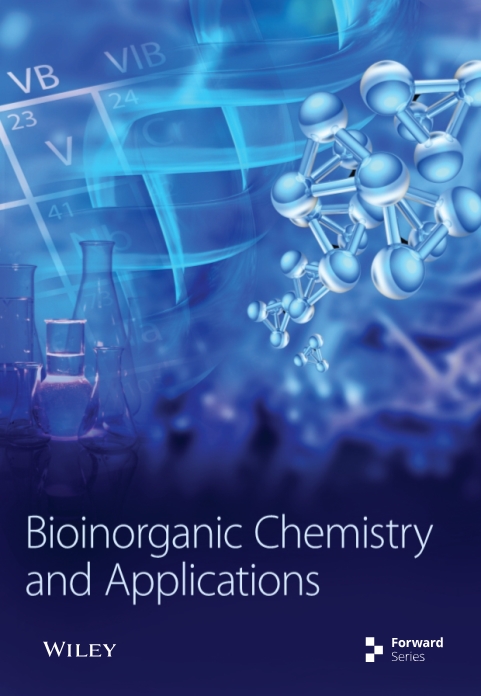紫杉醇负载银纳米粒子的合成与表征:细胞毒性效应和抗菌活性评估
IF 4.1
3区 化学
Q1 BIOCHEMISTRY & MOLECULAR BIOLOGY
引用次数: 0
摘要
据报道,将抗癌药物与纳米粒子相结合的载体系统疗法可以控制肿瘤生长,并显著降低抗癌药物的副作用。我们认为紫杉醇负载银纳米粒子(AgNPs-PTX)是靶向癌细胞的合适载体。我们还进行了抗菌活性实验,因为纳米颗粒形成的体系已被证明具有抗菌活性。在我们的研究中,我们使用了易于合成且成本低廉、具有生物催化和光催化优势的银纳米粒子(AgNPs)作为药物载体。我们研究了加入紫杉醇合成的银纳米粒子对 MCF-7(乳腺癌细胞系)、A549(肺癌细胞系)、C6(脑胶质瘤细胞系)和健康 WI-38(成纤维正常细胞系)细胞系的抗增殖活性,以及对 10 种不同微生物的抗菌活性。通过动态光散射(DLS)、扫描透射电子显微镜、紫外可见光谱、傅立叶变换红外光谱和 X 射线光谱对合成的 AgNPs 和 AgNPs-PTX 进行了表征。纳米颗粒呈球形,AgNPs 的尺寸范围为 2.32 至 5.6 nm,AgNPs-PTX 的尺寸范围为 24.36 至 58.77 nm。AgNPs 显示出良好的稳定性(-47.3 mV),AgNPs-PTX 显示出良好的稳定性(-25.4 mV)。用 XTT(四唑染料;2,3-双-(2-甲氧基-4-硝基-5-亚磺酰基)-(2H)-四唑-5-甲酰苯胺)测定了合成纳米粒子的抗增殖作用,用 annexin V/propidium iodide (PI) 染色测定了其促凋亡作用。在所有细胞系中,AgNPs-PTX 的效果更佳,抗癌活性高于 PTX。在计算选择性指数时,AgNPs-PTX 对 A549 细胞系的选择性更高(SI 值为 6.53 μg/mL)。经测定,AgNPs-PTX 可通过诱导 DNA 断裂增加细胞凋亡。为了确定抗菌活性,使用 8 种不同的细菌和 2 种不同的真菌进行了 MIC(最小抑菌浓度)测试。根据 MIC ≤100 μg/mL 的标准,10 种受测微生物中有 7 种表现出较高的抗菌活性,与参考来源相比,AgNPs 和 AgNPs-PTX 的 MIC 值分别低于 100 μg/mL 和 100 μg/mL。与标准抗生素相比,AgNPs-PTX 对 4 种微生物非常有效。本文章由计算机程序翻译,如有差异,请以英文原文为准。
Synthesis and Characterization of Paclitaxel-Loaded Silver Nanoparticles: Evaluation of Cytotoxic Effects and Antimicrobial Activity
Carrier system therapies based on combining cancer drugs with nanoparticles have been reported to control tumor growth and significantly reduce the side effects of cancer drugs. We thought that paclitaxel-loaded silver nanoparticles (AgNPs-PTX) were the right carrier to target cancer cells. We also carried out antimicrobial activity experiments as systems formed with nanoparticles have been shown to have antimicrobial activity. In our study, we used easy-to-synthesize and low-cost silver nanoparticles (AgNPs) with biocatalytic and photocatalytic advantages as drug carriers. We investigated the antiproliferative activities of silver nanoparticles synthesized by adding paclitaxel on MCF-7 (breast adenocarcinoma cell line), A549 (lung carcinoma cell line), C6 (brain glioma cell line) cells, and healthy WI-38 (fibroblast normal cell line) cell lines and their antimicrobial activities on 10 different microorganisms. The synthesized AgNPs and AgNPs-PTX were characterized by dynamic light scattering (DLS), scanning transmission electron microscopy, UV-visible spectroscopy, Fourier transform infrared spectroscopy, and X-ray spectroscopy. The nanoparticles were spherical in shape, with AgNPs ranging in size from 2.32 to 5.6 nm and AgNPs-PTXs from 24.36 to 58.77 nm. AgNPs demonstrated well stability of −47.3 mV, and AgNPs-PTX showed good stability of −25.4 mV. The antiproliferative effects of the synthesized nanoparticles were determined by XTT (tetrazolium dye; 2,3-bis-(2-methoxy-4-nitro-5-sulfenyl)-(2H)-tetrazolium-5-carboxanilide), and the proapoptotic effects were determined by annexin V/propidium iodide (PI) staining. The effect of AgNPs-PTX was more effective, and anticancer activity was higher than PTX in all cell lines. When selectivity indices were calculated, AgNPs-PTX was more selective in the A549 cell line (SI value 6.53 μg/mL). AgNPs-PTX was determined to increase apoptosis cells by inducing DNA fragmentation. To determine the antimicrobial activity, the MIC (minimum inhibitory concentration) test was performed using 8 different bacteria and 2 different fungi. Seven of the 10 microorganisms tested exhibited high antimicrobial activity according to the MIC ≤100 μg/mL standard, reaching MIC values below 100 μg/mL and 100 μg/mL for both AgNPs and AgNPs-PTX compared to reference sources. Compared to standard antibiotics, AgNPs-PTX was highly effective against 4 microorganisms.
求助全文
通过发布文献求助,成功后即可免费获取论文全文。
去求助
来源期刊

Bioinorganic Chemistry and Applications
化学-生化与分子生物学
CiteScore
7.00
自引率
5.30%
发文量
105
审稿时长
>12 weeks
期刊介绍:
Bioinorganic Chemistry and Applications is primarily devoted to original research papers, but also publishes review articles, editorials, and letter to the editor in the general field of bioinorganic chemistry and its applications. Its scope includes all aspects of bioinorganic chemistry, including bioorganometallic chemistry and applied bioinorganic chemistry. The journal welcomes papers relating to metalloenzymes and model compounds, metal-based drugs, biomaterials, biocatalysis and bioelectronics, metals in biology and medicine, metals toxicology and metals in the environment, metal interactions with biomolecules and spectroscopic applications.
 求助内容:
求助内容: 应助结果提醒方式:
应助结果提醒方式:


